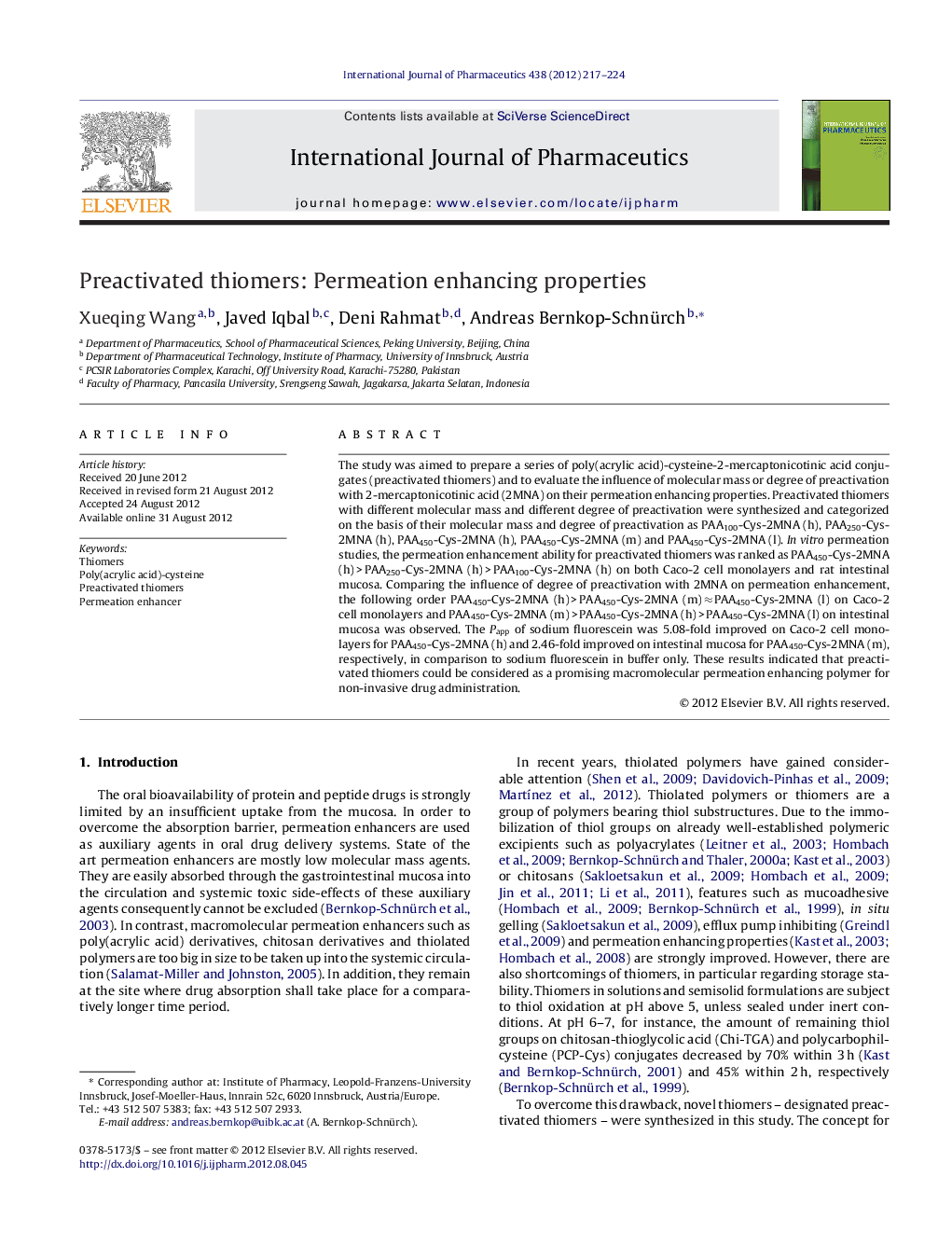| Article ID | Journal | Published Year | Pages | File Type |
|---|---|---|---|---|
| 5820427 | International Journal of Pharmaceutics | 2012 | 8 Pages |
Abstract
The study was aimed to prepare a series of poly(acrylic acid)-cysteine-2-mercaptonicotinic acid conjugates (preactivated thiomers) and to evaluate the influence of molecular mass or degree of preactivation with 2-mercaptonicotinic acid (2MNA) on their permeation enhancing properties. Preactivated thiomers with different molecular mass and different degree of preactivation were synthesized and categorized on the basis of their molecular mass and degree of preactivation as PAA100-Cys-2MNA (h), PAA250-Cys-2MNA (h), PAA450-Cys-2MNA (h), PAA450-Cys-2MNA (m) and PAA450-Cys-2MNA (l). In vitro permeation studies, the permeation enhancement ability for preactivated thiomers was ranked as PAA450-Cys-2MNA (h) > PAA250-Cys-2MNA (h) > PAA100-Cys-2MNA (h) on both Caco-2 cell monolayers and rat intestinal mucosa. Comparing the influence of degree of preactivation with 2MNA on permeation enhancement, the following order PAA450-Cys-2MNA (h) > PAA450-Cys-2MNA (m) â PAA450-Cys-2MNA (l) on Caco-2 cell monolayers and PAA450-Cys-2MNA (m) > PAA450-Cys-2MNA (h) > PAA450-Cys-2MNA (l) on intestinal mucosa was observed. The Papp of sodium fluorescein was 5.08-fold improved on Caco-2 cell monolayers for PAA450-Cys-2MNA (h) and 2.46-fold improved on intestinal mucosa for PAA450-Cys-2MNA (m), respectively, in comparison to sodium fluorescein in buffer only. These results indicated that preactivated thiomers could be considered as a promising macromolecular permeation enhancing polymer for non-invasive drug administration.
Related Topics
Health Sciences
Pharmacology, Toxicology and Pharmaceutical Science
Pharmaceutical Science
Authors
Xueqing Wang, Javed Iqbal, Deni Rahmat, Andreas Bernkop-Schnürch,
